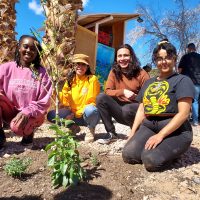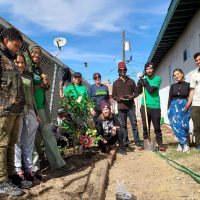Adding Half a Million Trees in Vegas?
Neighborhoods with a majority of people of color have 33% less tree canopy on average than majority white communities, according to the study. And neighborhoods with 90% or more of their residents living in poverty have 41% less tree canopy than communities with only 10% or less of the population in poverty.
In Southern Nevada, more than 560,000 trees will need to be planted to reach “tree equity,” or the number of trees needed so that all residents can benefit from shade, cooler temperatures and reductions in carbon.
Read more at The Nevada Current here.
For instance, when looking at tree canopy coverage, a hot spot identified around East Bonanza Road and North Eastern Avenue shows between 2 to 6 percent tree coverage, whereas the Summerlin area has tree coverage averaging between 10 to 20 percent.
“City planning knows that there are portions of the Las Vegas community that are unfairly burdened by just by virtue of living in neighborhoods with older homes, or having lower incomes and not being able to afford an electrical bill of $450 in the middle of summer, or whose occupations put them at risk because they work outdoors,” said Ariel Choinard, a doctoral student in School of Public Policy and Leadership, who was a part of the UNLV project.
Read more at the Review Journal here.
Nevada Plants is Here to Help
We are on the ground planting trees to solve these problems. With your help, we can do even more. Click below to make a contribution.
Search
Projects
ALL CONTACTS
- Nevada
- Office - 702-423-2120
- info@nevadaplants.com
SUBSCRIBE
Get updates about Nevada Plants!
- info@nevadaplants.com





